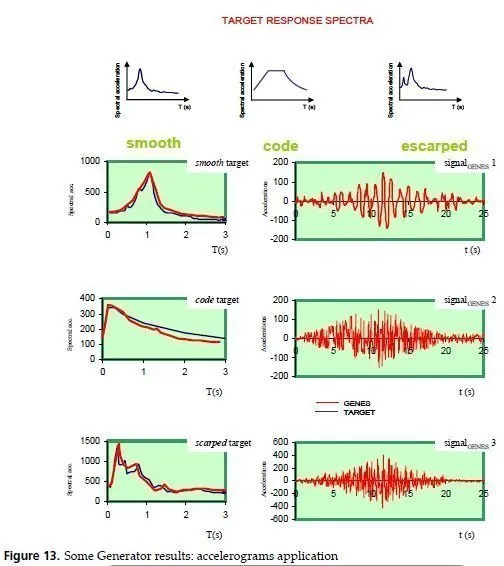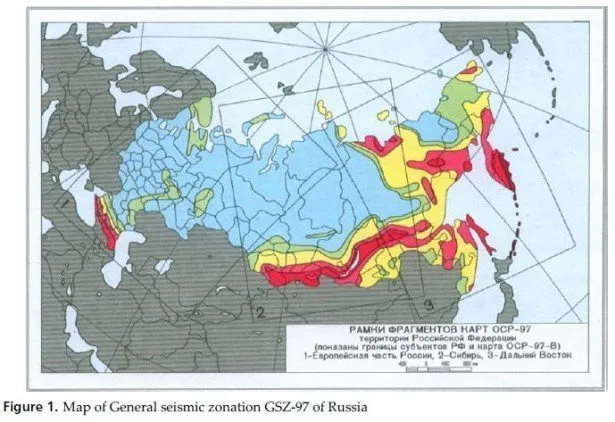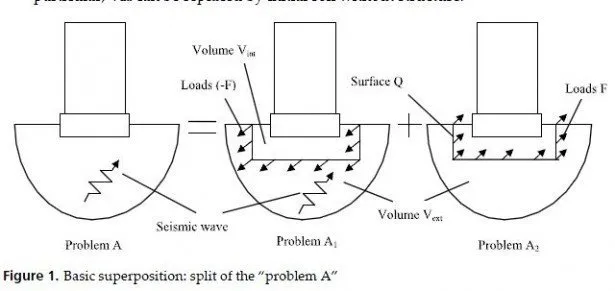For nonlinear seismic response analysis, where the superposition techniques do not apply, earthquake acceleration time histories are required as inputs. Virtually all seismic design codes and guidelines require scaling of selected ground motion time histories so that they match or exceed the controlling design spectrum within a period range of interest.
Considerable variability in the characteristics of the recorded strong-motions under similar??conditions may still require a characterization of future shaking in terms of an ensemble of accelerograms rather than in terms of just one or two typical records. This situation has thus created a need for the generation of synthetic (artificial) strong-motion time histories that simulate realistic ground motions from different points of views and/or with different degrees of sophistication. To provide the ground motions for analysis and design, various methods have been developed: i) frequency-domain methods where the frequency content of recorded signals is manipulated [57-60] and ii) time-domain methods where the recorded ground motions amplitude is controlled [61, 62]. Regardless of the method, first, one or more time histories are selected subjectively, and then scaling mechanisms for spectrum matching are applied. This is a trial and error procedure that leads artificial signals very far from real-earthquake time series.
In this investigation a Genetic Generator of Signals is presented. This genetic generator is a tool for finding the coefficients of a pre-specified functional form, which fit a given sampling of values of the dependent variable associated with particular given values of the independent variable(s). When the genetic generator is applied to synthetic accelerograms construction, the proposed tool is capable of i) searching, under specific soil and seismic conditions (within thousands of earthquake records) and recommending a desired subset that better match a target design spectrum, and ii) through processes that mimic mating, natural selection, and mutation, producing new generations of accelerograms until an optimum individual is obtained. The procedure is fast and reliable and results in time series that match any type of target spectrum with minimal tampering and deviation from recorded earthquakes characteristics.
The objective of the genetic generator, when applied to synthetic earthquakes construction, is to produce compatible artificial signals with specific design spectra. In this model specific seismic (fault rupture, magnitude, distance, focal depth) and site characteristics (soil/ rock) are the first set of inputs. They are included to take into consideration that a typical strong motion record consists of a variety of waves whose contribution depends on the earthquake source mechanism (wave path) and its particular characteristics are influenced by the distance between the source and the site, some measure of the size of the earthquake, and the surrounding geology and site conditions; and that the design spectra can be an envelope or integration of many expected ground motions that are possible to occur in certain period of time, or the result of a formulation that involves earthquake magnitude, distance and soil conditions. The second set of inputs consist of the target spectrum, the period range for the matching, lower- and upper-bound acceptable values for scaling signal shape, and a collection of GAs parameters (a population size, number of generations, crossover ratio, and mutation ratio). The output is the more success individual with a chromosome array generated from real accelerograms parents (a set of).
The algorithm (see Figure 10) is started with a set of solutions (each solution is called a chromosome). A solution is composed of thousands of components or genes (accelerations recorded at the time), each one encoding a particular trait. The initial solutions (original population) are selected based on the seismic parameters at a site (defined previously by the user): fault mechanism, moment magnitude, epicentral distance, focal depth, geotechnical and geological site classification, depth of sediments. If the user does not have a priori seismic/site knowledge, the genetic generator could select the initial population randomly (Figure 11). Once the model has found the seed-accelerogram(s) or chromosome(s), the space of all feasible solutions can be called accelerograms space (state space). Each point in this search space represents one feasible solution and can be “marked” by its value or fitness for the problem. The looking for a solution is then equal to a looking for some extreme (minimum or maximum) in the space.
According to the individuals fitness, expressed by difference between the target design spectrum and the chromosome response spectrum, the problem is formulated as the minimization of the error function, Z, between the actual and the target spectrum in a certain period range. Solutions with highest fitness are selected to form new solutions (offspring). During reproduction, the recombination (or crossover) and mutation permits to change the genes (accelerations) from parents (earthquake signals) in some way that the whole new chromosome (synthetic signal) contains the older organisms attributes that assure success. This is repeated until some users condition (for example number of populations or improvement of the best solution) is satisfied (Figure 12).
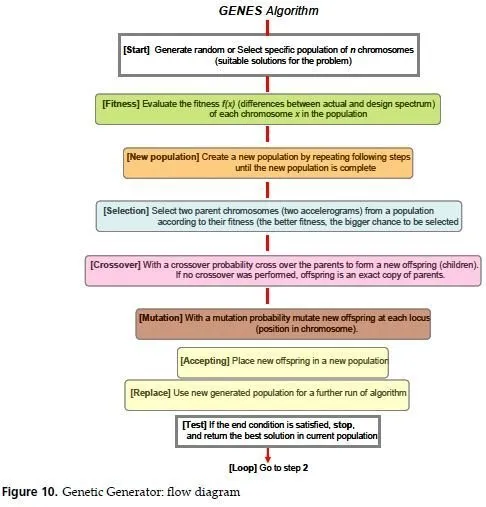
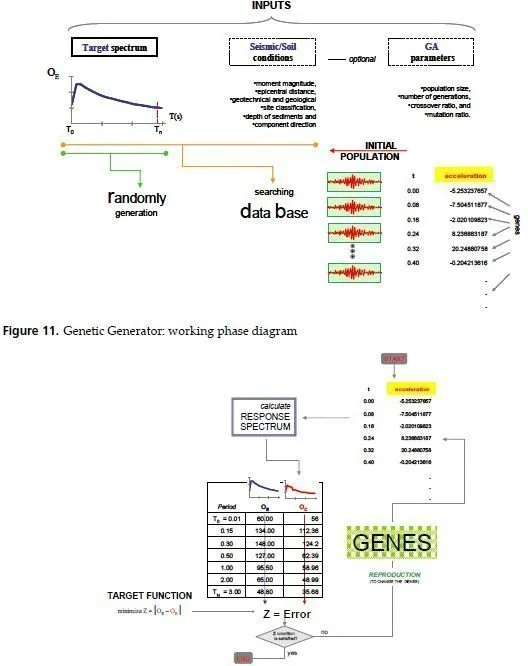
One of the genetic advantages is the possibility of modifying on line the image of the expected earthquake. While the genetic model is running the user interface shows the chromosome per epoch and its response spectra in the same window, if the duration time, the highest intensities interval or the ï„t are not convenient for the users interests, these values can be modified without retraining or a change on model structure.
In Figure 13 are shown three examples of signals recovered following this methodology. The examples illustrate the application of the genetic methodology to select any number of records to match a given target spectrum (only the more successful individuals for each target are shown in the figure). It can be noticed the stability of the genetic algorithm in adapting itself to smooth, code or scarped spectrum shapes. The procedure is fast and reliable as results in records match the target spectrum with minimal deviation. The genetic procedure has been applied successfully to generate synthetic ground motions having different amplitudes, duration and combinations of moment magnitude and epicentral distance. Although the variations in the target spectra, the genetic signals maintain the nonlinear and nonstationary characteristics of real earthquakes. It is still under development an additional toolbox that will permit to use advanced signal analysis instruments because, as it has been demonstrated [63] [64], studying nonstationary signals through Fourier or response spectra is not convenient for all applications.
